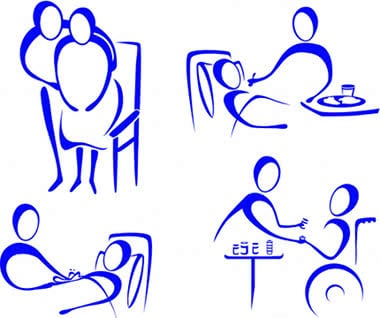
Care providers moving a senior from their home or the hospital into a care provider’s home is challenging for all involved. To smooth the transition, family can consider taking the steps listed below. Following these tips, care providers also encourage independence and choice which will lighten the load of unnecessary work.
Mobility
Clear all pathways and stairs of items. Place pathway lights from the loved one’s bedroom to the bathroom, kitchen, and other living areas. Care providers make passage safe should the loved one want a midnight snack or need to go to the bathroom. These lights require no installation but are battery operated and placed on the wall without nails. Care providers can acquire a cane with a grabber attached. The grabber unseats from the cane to pick up an item or reach up to a cupboard. Family can acquire carpets, designed to place on ice, to allow for appointments, errands, and socialization in winter weather.
Food Preparations and Meals
Care providers can arrange plates, eating utensils, saucepans, and even an over-the-bed tray table at a safely accessible height to reduce fall risks. Foods in cupboards and in the refrigerator are items to place at accessible heights.
Finances
Care providers should plan ahead to keep discretionary funds available. Elder parents sometimes choose to go without funds rather than ask for money out of pride or for fear of being a burden.
Socialization
Care providers should make sure the senior has phone numbers and contact information of friends to stay in touch for calls, outings, and visits.
Prescriptions
Medication planners are useful in making sure your loved one takes medication correctly and on time. Some planners verbally remind the individual for breakfast, lunch,dinner, and bedtime. Sections are often removable to allow for taking medicine during outings.
Hygiene and Grooming
If necessary, care providers should request a doctor’s prescription for a shower chair. Care providers can place back brushes within safe reach to promote independence. Family should allow for as much privacy as possible during showers. Clothing carefully placed at accessible heights also reduce fall risk in the bedrooms.
Hobbies
If loved ones enjoy certain hobbies, make supplies available in a designated area to provide structure and enjoyment during the day.
Cost
Care providers need not bear the full financial brunt of the above items. Ask specialists, before the loved one discharges from the hospital, which items insurance covers and to assist in acquiring the items. Care providers can also include siblings and other family members in funding the loved one’s needs from the beginning. All of the above listed items are available online and often priced below twenty dollars. In completing these steps before transition, care providers/family are setting the home up for a caring experience for all involved.